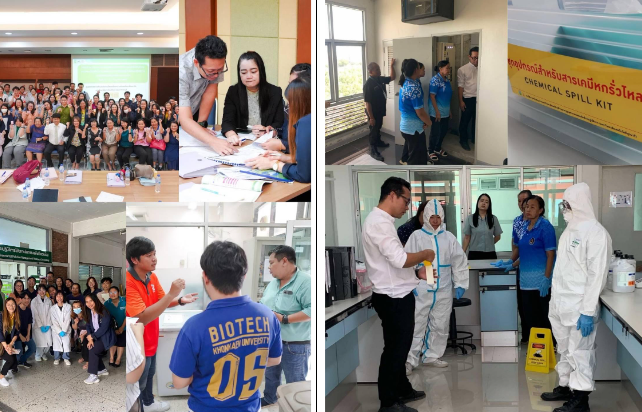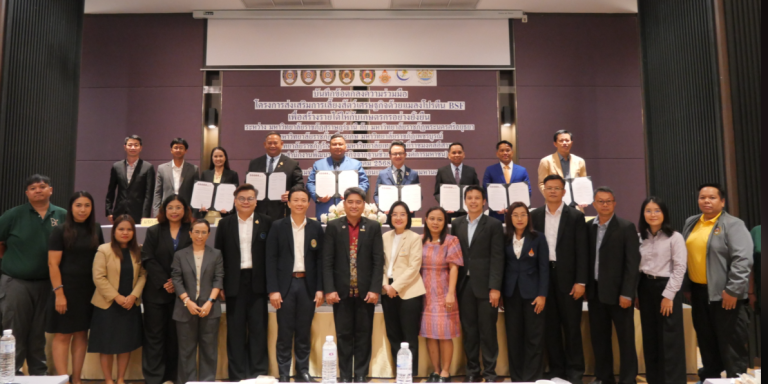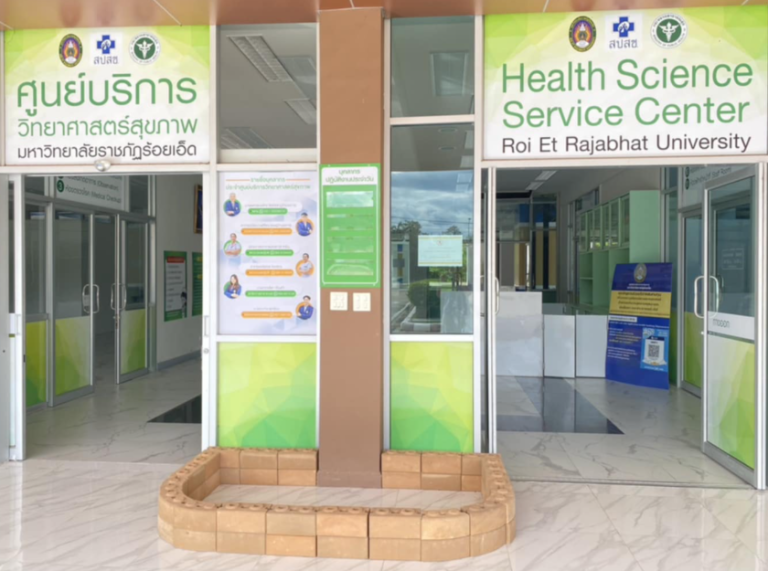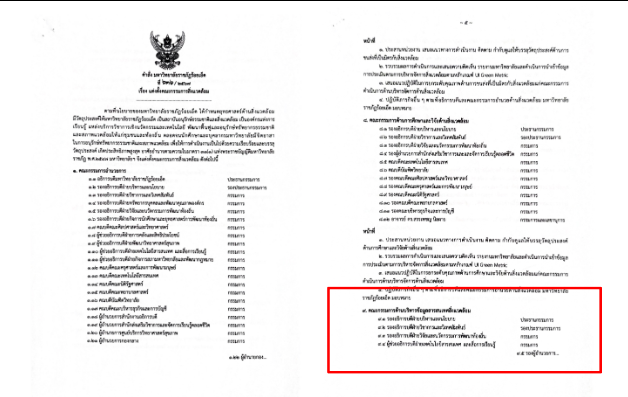Toxic Waste Treatment
| e-waste collecting point (RERU, Thailand) | Temporary infectious waste storage after autoclave |
| Laboratories waste management diagram | Chemical and hazard waste storage zone in laboratory |
| Toxic waste collecting by authorized & certified company | Toxic waste report 2024 |
| Train the traniner workshop | Lab staff safety training 2024 |
Description:
- Hazardous waste outside of laboratories, such as e-waste, is collected at designated points throughout the university. At scheduled intervals, the accumulated waste is collected and transferred to authorized agencies for proper disposal. (figure 1 and 5)
- Hazardous laboratory waste is categorized into biological and chemical hazards. Biological waste is treated through autoclaving and then temporarily stored until a negative spore test confirms sterilization. Afterward, it proceeds to the next disposal stage.(figure 2)
- Chemical and toxic waste generated in laboratories is systematically classified according to the accompanying diagram and stored in designated containers within a specialized storage area. Upon completion of the designated storage period, the waste is collected and disposed of by a certified private company that adheres to established standards and regulations set forth by relevant governmental agencies, thereby ensuring the implementation of appropriate disposal methods in compliance with best practices. (figure 3-5)
- While stringent measures are in place for managing hazardous waste within the university and its laboratories, it is essential to continuously update our knowledge to ensure its accuracy and relevance. Over the past year, representatives from the Laboratory Safety Committee underwent training to become certified instructors in hazardous waste and chemical management. This training aims to enhance the correct management of laboratory waste and to disseminate this knowledge to laboratory personnel, including scientists, researchers, students, and cleaning staff, thereby ensuring the safety of operators, stakeholders, and the environment. (figure 7)
- In 2024, we also conducted training on emergency response and hazardous waste and toxic substance management for relevant personnel, maintaining our commitment to ongoing education and preparedness, as we have done consistently each year. (figure 8)
Additional evidence link (i.e., for videos, more images, or other files that are not included in this file):
- https://drive.google.com/file/d/13m662yrXmtkIR-qGoCtbKOKh53wmzupu/view?usp=drive_link
- https://sites.google.com/reru.ac.th/reru-environment-safety-report/2024-actities/2024-toxic-waste-treatment
- https://sites.google.com/reru.ac.th/reru-environment-safety-report/2024-actities/2024-esprel-lab-safety-evaluation
- https://sites.google.com/reru.ac.th/reru-environment-safety-report/2024-actities/2024-train-the-trainer
- https://sites.google.com/reru.ac.th/reru-environment-safety-report/2024-actities/2024-safety-training
- https://sites.google.com/reru.ac.th/reru-environment-safety-report/2024-report/2024-toxic-wast-rep




